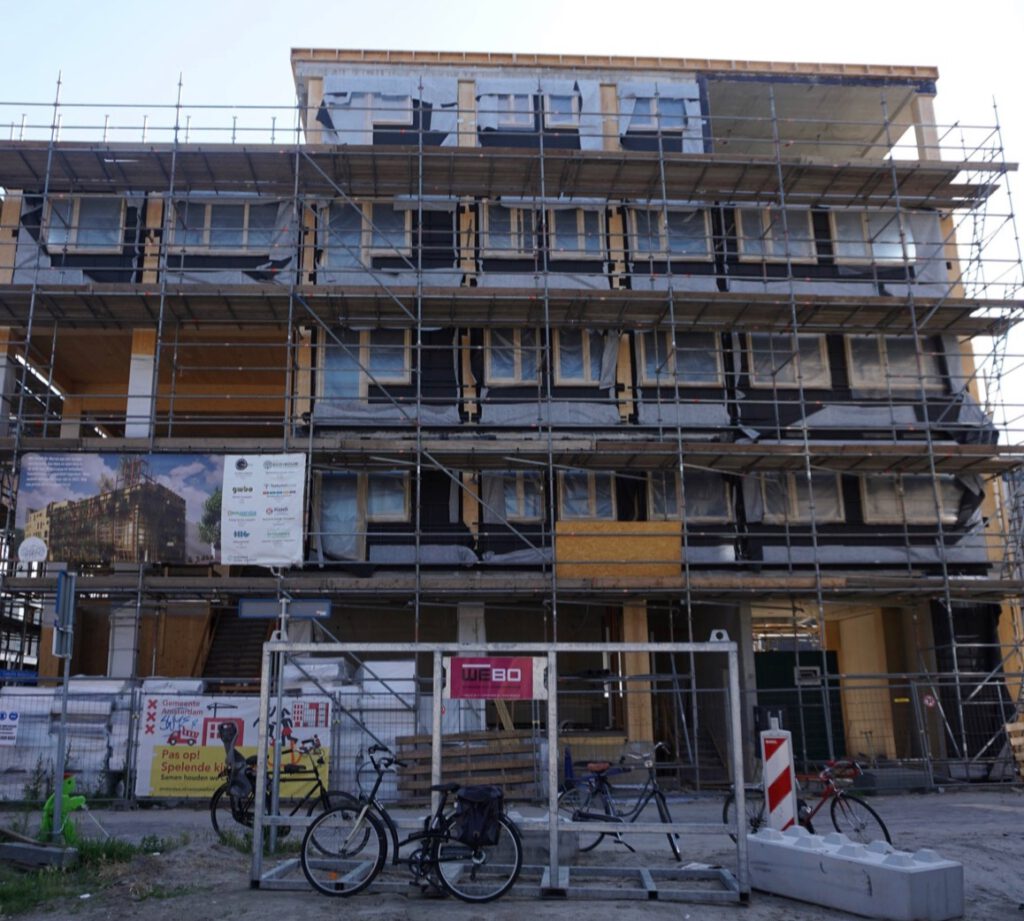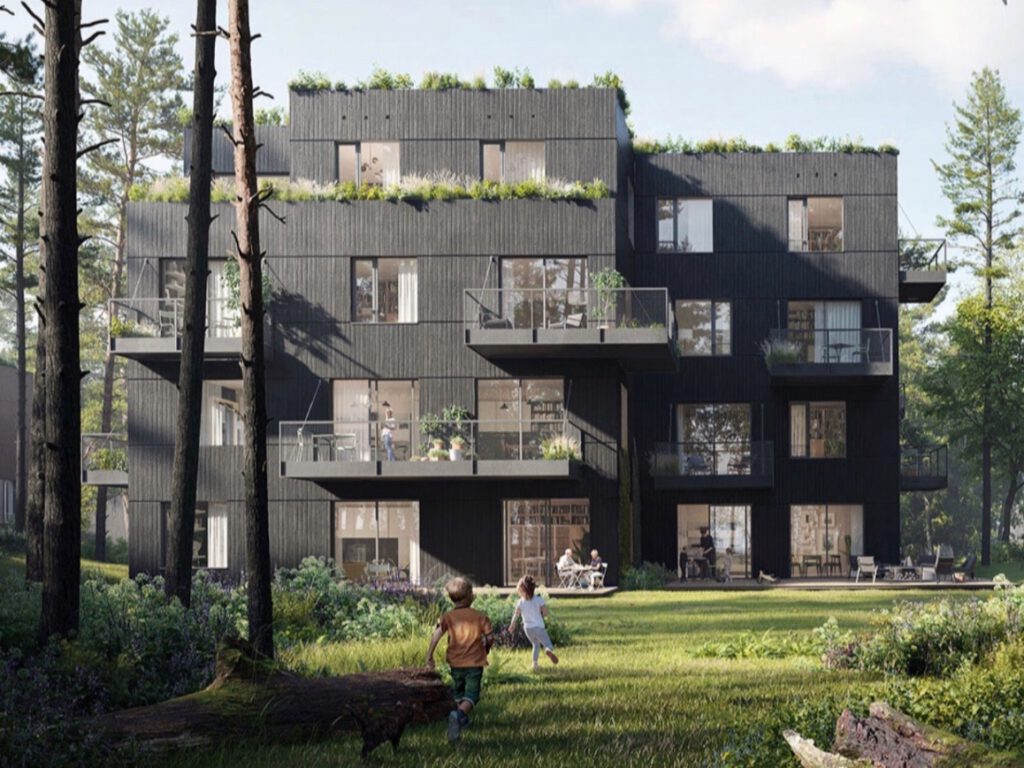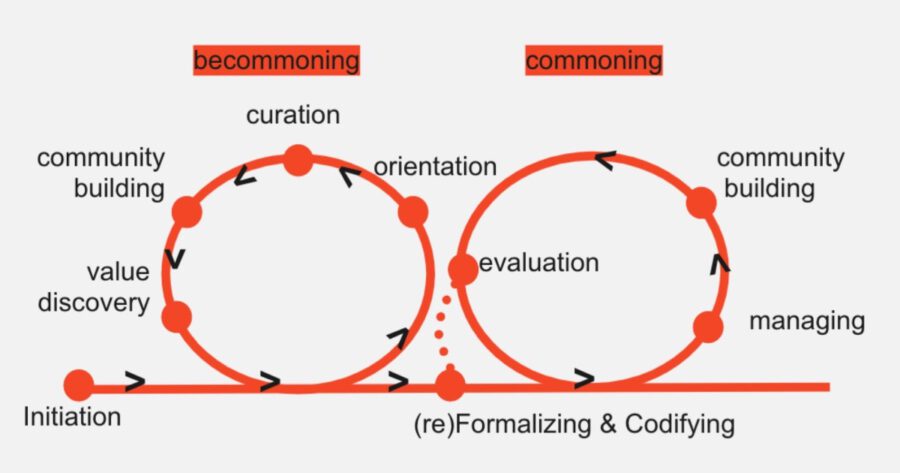The Charging the Commons project investigates the design of the rules and (digital) tools for ‘resource communities’. These are resident groups who want to jointly develop and manage a ‘resource’ such as energy or housing, usually in a pro-social and sustainable way. Charging the Commons builds on the Circulate project, a previous research where we looked at design dilemmas designers can encounter when creating the rules and tools for these communities, see here. Now with Charging the Commons, we look at how designers can ensure that they properly reflect the values of the community in setting up these communities and in the design process of the rules and tools for the communities. We use situated design as a research method.
In this research, three cases have been identified so far. Two of these are still in the start-up phase (the process of what we have come to call becommoning): Common Woods and the H-buurt. The third case, De Warren, is somewhat ahead of these two and is in the commoning phase. They are interested in exploring approaches and systems for sharing at the location where they will soon live.
The Cases
Community Land Trust – H-buurt, Amsterdam Zuidoost
The H-Buurt Community Land Trust consists mainly of Ghanaian and Nigerian residents and families. With the assistance of architectural firm Space & Matter (and in collaboration with CLT Bijlmer and & the people), they have the ambition to establish a housing cooperative and register on a building plot in the Bijlmer where +/-30 rental homes can be built. The ultimate goal is to create a network of residential groups (clustered CLT housing associations). This can be beneficial in the long term when setting up your own energy cooperative. The project is currently financed with subsidy money (from &thepeople.)
Core wishes are shared spaces for cooking and family activities. An important factor in a sustainable (building) approach is to keep (energy) costs low. In addition to sustainability and ‘common good’, it is also about being able to survive in an increasingly gentrified neighborhood.
An interesting discovery is that the information from the municipality about setting up a housing association is mainly provided in Dutch and is, therefore, less accessible to the H-buurt residents. This creates a high threshold and ‘learning curve’ concerning the inevitable administrative process.
Participants in the corporation project mainly communicate through WhatsApp messages. The local church serves as a common denominator and physical communication hub ensuring cohesion in the group.
Key concepts: social sustainability, neighborhood cohesion, joining forces, financial incentive. H-buurt is in collaboration with research consortium partner Space & Matter.

De Warren, Amsterdam Centrumeiland
De Warren is a housing association with 16 social and 20 mid-rental homes on Center Island. Their core values are: caring for each other, the environment, and the city. The project was selected by the municipality for a plot, where energy-neutral and rainproof construction can be realized. They use the 7 Pillars of the Circular Economy (Metabolic.) The sharing economy is an important aspect of De Warren (cars, space, tools) and there is a desire to also share with the neighborhood. In addition to shared kitchens and sanitary facilities, there is room for gathering, co-creation, workplaces, play, and education for children. The holacracy decision-making structure has been chosen. ‘This sense of ownership, involvement and responsibility creates a commonality that will generate positive social value.’ The aim is to widely share the knowledge gained during the process with future housing associations using a toolkit.
Key terms: social sustainability, energy neutral, neighborhood-oriented, circular, knowledge transfer. The Warren is an initiative of research consortium partner Metabolic.

Commonwoods, Amersfoort
The commoning process at Commonwoods is completely different. The initiator here is not the community, but the developer. This has developed a plan for a residential neighborhood where the residents form a community and share resources. A selection process based on motivation takes place for the owner-occupied homes. This does not yet seem possible for social housing, because these homes are added to the regular stock and allocated in the same way. It also seems that the residents of social housing are involved, but with a different set of rights, benefits and obligations.
The community still needs to be established in this case study.
Space & Matter is involved in the development of Commonswoods.

